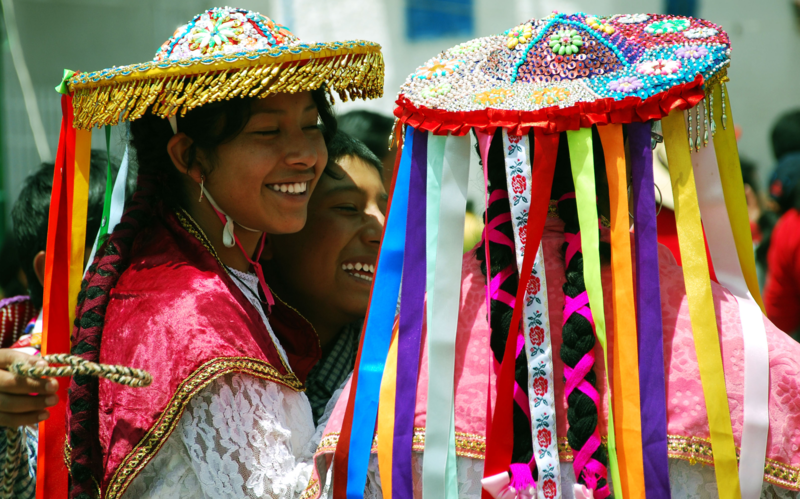Current Challenges For Indigenous Communities in Latin America

Data from 2014 shows that there are 58.2 million Indigenous people and 826 different ethnic groups in Latin America. Due to marginalization and discrimination, the current challenges for Indigenous communities in Latin America include a lack of access to quality education, inadequate access to health care services, low internet access and land appropriation.
Challenges for Indigenous Communities in Latin America
- Health. Life expectancy among Indigenous peoples is up to 20 years lower than non-Indigenous people, according to the United Nations, due to disease outbreaks. A lack of access to treatment and quality health care due to poverty and marginalization also plays a significant role. In particular, “Indigenous peoples experience disproportionately high levels of maternal and infant mortality, malnutrition, cardiovascular illnesses, HIV/AIDS and other infectious diseases such as malaria and tuberculosis,” the U.N. reports. In fact, more than half of Indigenous adults suffer from type 2 diabetes. Furthermore, maternal mortality is a very concerning issue that affects mothers and newborns because of low access to hospitals and the lack of available doctors/trained professionals. In Guatemala, for example, in 2008, skilled professionals attended only about 30% of the births involving Indigenous women.
- Education. Education is a proven pathway out of oppression, marginalization and poverty. According to Article 14 of the U.N. Declaration on the Rights of Indigenous Peoples, “Indigenous peoples have the right to establish and control their educational systems and institutions providing education in their own languages, in a manner appropriate to their cultural methods of teaching and learning.” Yet, one of the current challenges for Indigenous communities in Latin America is the lack of access to quality education at all levels and low completion rates. In 2016, 85% of Indigenous children in Latin America participated in secondary education but just 40% finished their secondary education.
- Access to the Internet. The OECD says the “Internet is the backbone of the digital economy, it underpins much of the world’s social activity and it is a powerful catalyst for innovation, economic growth and social well-being.” Among other benefits, the internet increases access to education, job opportunities and information and allows for the dissemination of information and news. But, Indigenous peoples lack access to the internet and digital tools required to thrive in an increasingly digital world. For example, in Ecuador and Peru, non-indigenous households have access to the internet “six times greater” than Indigenous communities.
- Land Appropriation. Indigenous people have faced issues concerning land rights in the territories belonging to them. Apart from territorial invasions and forced displacements, deforestation as well as construction and mining activities affect Indigenous peoples’ rights to preserve their lands. In most of these situations, major companies are involved. Indigenous communities have faced violence from people looking to exploit the land’s resources. Data indicates that Peru, Colombia, Mexico, Guatemala and Honduras saw 2,109 incidents of “communities affected by extractive industries and their associated activities” between 2017 and 2021.
The International Work Group for Indigenous Affairs (IWGIA)
The International Work Group for Indigenous Affairs (IWGIA) is a non-governmental organization dedicated to defending and upholding “Indigenous Peoples’ individual and collective rights.” Its primary goal is to promote, respect and safeguard “Indigenous Peoples’ rights to land, territories and resources.”
The IWGIA was founded in 1968 when a group of concerned scholars became aware of the genocide against Indigenous Peoples in the Amazon. The IWGIA is currently working in different areas, such as climate change, land appropriation and global governance.
Safeguarding Land Rights and Amplifying Voices
In terms of displacement and land appropriation/dispossession, IWGIA explains the far-reaching consequences: “Land dispossession will lead to the loss of Indigenous Peoples’ traditional livelihood practices and the inter-generational transfer of Indigenous knowledge and will undermine their social organization, traditional institutions and cultural and spiritual practices; all of which can cause poverty, food insecurity, social disintegration and loss of identity and human dignity.” For these reasons, IWGIA’s “strategic focus areas” for 2021 to 2025 involve documenting violations, advocating for accountability and protection and empowering and supporting Indigenous people to “defend their land rights and to achieve land tenure security.”
The IWGIA wants to ensure Indigenous people’s voices are heard at an international level and that Indigenous people participate in important decision-making processes. In 2021, IWGIA produced 58 articles, podcasts and videos to raise awareness of Indigenous rights and spoke to nine different universities to disseminate this information. The IWGIA also participated in 20 United Nations meetings and made efforts by “facilitating events, providing information and supporting Indigenous Peoples’ participation.”
Despite ongoing marginalization and discrimination, human rights advocates and organizations continue to fight for the rights of vulnerable Indigenous communities.
– Elena Luisetto
Photo: Wikipedia Commons
